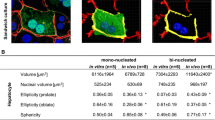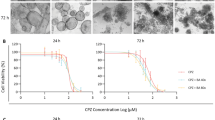Abstract
At present, it has not been systematically evaluated whether the functional alterations induced by cholestatic compounds in canalicular transporters involved in bile formation can be reproduced in sandwich-cultured rat hepatocytes (SCRHs). Here, we focused on two clinically relevant cholestatic agents, such as estradiol 17β-d-glucuronide (E17G) and taurolithocholate (TLC), also testing the ability of dibutyryl cyclic AMP (DBcAMP) to prevent their effects. SCRHs were incubated with E17G (200 µM) or TLC (2.5 µM) for 30 min, with or without pre-incubation with DBcAMP (10 µM) for 15 min. Then, the increase in glutathione methyl fluorescein (GS-MF)-associated fluorescence inside the canaliculi was monitored by quantitative time-lapse imaging, and Mrp2 transport activity was calculated by measuring the slope of the time-course fluorescence curves during the initial linear phase, which was considered to be the Mrp2-mediated initial transport rate (ITR). E17G and TLC impaired canalicular bile formation, as evidenced by a decrease in both the bile canaliculus volume and the bile canaliculus width, estimated from 3D and 2D confocal images, respectively. These compounds decreased ITR and induced retrieval of Mrp2, a main pathomechanism involved in their cholestatic effects. Finally, DBcAMP prevented these effects, and its well-known choleretic effect was evident from the increase in the canalicular volume/width values; this choleretic effect is associated in part with its capability to increase Mrp2 activity, evidenced here by the increase in ITR of GS-MF. Our study supports the use of SCRHs as an in vitro model useful to quantify canalicular transport function under conditions of cholestasis and choleresis.






Similar content being viewed by others
References
Ansede JH, Smith WR, Perry CH, St Claire RL, Brouwer KR (2010) An in vitro assay to assess transporter-based cholestatic hepatotoxicity using sandwich-cultured rat hepatocytes. Drug Metab Dispos 38(2):276–280. doi:10.1124/dmd.109.028407
Barosso IR, Zucchetti AE, Boaglio AC et al (2012) Sequential activation of classic PKC and estrogen receptor alpha is involved in estradiol 17ß-D-glucuronide-induced cholestasis. PLoS One 7(11):e50711. doi:10.1371/journal.pone.0050711
Berthiaume F, Moghe PV, Toner M, Yarmush ML (1996) Effect of extracellular matrix topology on cell structure, function, and physiological responsiveness: hepatocytes cultured in a sandwich configuration. FASEB J 10(13):1471–1484
Beuers U, Probst I, Soroka C, Boyer JL, Kullak-Ublick GA, Paumgartner G (1999) Modulation of protein kinase C by taurolithocholic acid in isolated rat hepatocytes. Hepatology 29(2):477–482. doi:10.1002/hep.510290227
Beuers U, Bilzer M, Chittattu A et al (2001) Tauroursodeoxycholic acid inserts the apical conjugate export pump, Mrp2, into canalicular membranes and stimulates organic anion secretion by protein kinase C-dependent mechanisms in cholestatic rat liver. Hepatology 33(5):1206–1216. doi:10.1053/jhep.2001.24034
Beuers U, Denk GU, Soroka CJ et al (2003) Taurolithocholic acid exerts cholestatic effects via phosphatidylinositol 3-kinase-dependent mechanisms in perfused rat livers and rat hepatocyte couplets. J Biol Chem 278(20):17810–17818. doi:10.1074/jbc.M209898200
Boaglio AC, Zucchetti AE, Sanchez Pozzi EJ et al (2010) Phosphoinositide 3-kinase/protein kinase B signaling pathway is involved in estradiol 17ß-D-glucuronide-induced cholestasis: complementarity with classical protein kinase C. Hepatology 52(4):1465–1476. doi:10.1002/hep.23846
Boaglio AC, Zucchetti AE, Toledo FD et al (2012) ERK1/2 and p38 MAPKs are complementarily involved in estradiol 17ß-D-glucuronide-induced cholestasis: crosstalk with cPKC and PI3K. PLoS One 7(11):e49255. doi:10.1371/journal.pone.0049255
Boyer JL, Soroka CJ (1995) Vesicle targeting to the apical domain regulates bile excretory function in isolated rat hepatocyte couplets. Gastroenterology 109(5):1600–1611. doi:10.1016/0016-5085(95)90649-5
Coleman R, Roma MG (2000) Hepatocyte couplets. Biochem Soc Trans 28(2):136–140
Crocenzi FA, Mottino AD, Cao J et al (2003a) Estradiol-17ß-D-glucuronide induces endocytic internalization of Bsep in rats. Am J Physiol Gastrointest Liver Physiol 285(2):G449–G459. doi:10.1152/ajpgi.00508.2002
Crocenzi FA, Mottino AD, Sanchez Pozzi EJ et al (2003b) Impaired localisation and transport function of canalicular Bsep in taurolithocholate-induced cholestasis in the rat. Gut 52(8):1170–1177. doi:10.1136/gut.52.8.1170
Crocenzi FA, Basiglio CL, Perez LM, Portesio MS, Sanchez Pozzi EJ, Roma MG (2005) Silibinin prevents cholestasis-associated retrieval of the bile salt export pump, Bsep, in isolated rat hepatocyte couplets: possible involvement of cAMP. Biochem Pharmacol 69:1113–1120. doi:10.1016/j.bcp.2005.01.009
Crocenzi FA, Sanchez Pozzi EJ, Ruiz ML et al (2008) Ca(2+)-dependent protein kinase C isoforms are critical to estradiol 17beta-D-glucuronide-induced cholestasis in the rat. Hepatology 48(6):1885–1895. doi:10.1002/hep.22532
Crocenzi FA, Zucchetti AE, Boaglio AC et al (2012) Localization status of hepatocellular transporters in cholestasis. Front Biosci 17:1201–1218. doi:10.2741/3981
Cruz LN, Guerra MT, Kruglov E et al (2010) Regulation of multidrug resistance-associated protein 2 by calcium signaling in mouse liver. Hepatology 52(1):327–337. doi:10.1002/hep.23625
De Bruyn T, Chatterjee S, Fattah S et al (2013) Sandwich-cultured hepatocytes: utility for in vitro exploration of hepatobiliary drug disposition and drug-induced hepatotoxicity. Expert Opin Drug Metab Toxicol 9(5):589–616. doi:10.1517/17425255.2013.773973
Dunn JC, Yarmush ML, Koebe HG, Tompkins RG (1989) Hepatocyte function and extracellular matrix geometry: long-term culture in a sandwich configuration. FASEB J 3(2):174–177
Dunn JC, Tompkins RG, Yarmush ML (1991) Long-term in vitro function of adult hepatocytes in a collagen sandwich configuration. Biotechnol Prog 7(3):237–245. doi:10.1021/bp00009a007
Dunn JC, Tompkins RG, Yarmush ML (1992) Hepatocytes in collagen sandwich: evidence for transcriptional and translational regulation. J Cell Biol 116(4):1043–1053. doi:10.1083/jcb.116.4.1043
Fouin-Fortunet H, Le Quernec L, Erlinger S, Lerebours E, Colin R (1982) Hepatic alterations during total parenteral nutrition in patients with inflammatory bowel disease: a possible consequence of lithocholate toxicity. Gastroenterology 82(5 Pt 1):932–937
Garcia F, Kierbel A, Larocca MC et al (2001) The water channel aquaporin-8 is mainly intracellular in rat hepatocytes, and its plasma membrane insertion is stimulated by cyclic AMP. J Biol Chem 276(15):12147–12152. doi:10.1074/jbc.M009403200
Gautam A, Ng OC, Strazzabosco M, Boyer JL (1989) Quantitative assessment of canalicular bile formation in isolated hepatocyte couplets using microscopic optical planimetry. J Clin Invest 83(2):565–573. doi:10.1172/JCI113919
Kipp H, Pichetshote N, Arias IM (2001) Transporters on demand: intrahepatic pools of canalicular ATP binding cassette transporters in rat liver. J Biol Chem 276(10):7218–7224. doi:10.1074/jbc.M007794200
Kruglov EA, Gautam S, Guerra MT, Nathanson MH (2011) Type 2 inositol 1,4,5-trisphosphate receptor modulates bile salt export pump activity in rat hepatocytes. Hepatology 54(5):1790–1799. doi:10.1002/hep.24548
Larocca MC, Soria LR, Espelt MV, Lehmann GL, Marinelli RA (2009) Knockdown of hepatocyte aquaporin-8 by RNA interference induces defective bile canalicular water transport. Am J Physiol Gastrointest Liver Physiol 296(1):G93–G100. doi:10.1152/ajpgi.90410.2008
Linarelli LG, Williams CN, Phillips MJ (1972) Byler’s disease: fatal intrahepatic cholestasis. J Pediatr 81(3):484–492. doi:10.1016/S0022-3476(72)80174-4
Liu X, LeCluyse EL, Brouwer KR et al (1999) Biliary excretion in primary rat hepatocytes cultured in a collagen-sandwich configuration. Am J Physiol Gastrointest Liver Physiol 277(1 Pt 1):G12–G21
Milkiewicz P, Roma MG, Mills CO, Coleman R, Elias E (1999) Tauroursodeoxycholate (TUDCA) protects against redistribution of multidrug resistant protein 2 (Mrp2) and disruption of F-actin caused by taurolithocholate (TLC); a study in isolated rat hepatocyte couplets. Hepatology 30(4 Pt 2):462A
Milkiewicz P, Roma MG, Elias E, Coleman R (2002a) Hepatoprotection with tauroursodeoxycholate and β-muricholate against taurolithocholate induced cholestasis: involvement of signal transduction pathways. Gut 51(1):113–119. doi:10.1136/gut.51.1.113
Milkiewicz P, Roma MG, Elias E, Coleman R (2002b) Pathobiology and experimental therapeutics in hepatocellular cholestasis: lessons from the hepatocyte couplet model. Clin Sci (Lond) 102(6):603–614. doi:10.1042/CS20010353
Mottino AD, Cao J, Veggi LM, Crocenzi FA, Roma MG, Vore M (2002) Altered localization and activity of canalicular Mrp2 in estradiol-17ß-D-glucuronide-induced cholestasis. Hepatology 35(6):1409–1419. doi:10.1053/jhep.2002.33327
Murphy GM, Jansen FH, Billing BH (1972) Unsaturated monohydroxy bile acids in cholestatic liver disease. Biochem J 129(2):491–494
Nakanishi T, Shibue Y, Fukuyama Y et al (2011) Quantitative time-lapse imaging-based analysis of drug–drug interaction mediated by hepatobiliary transporter, multidrug resistance-associated protein 2, in sandwich-cultured rat hepatocytes. Drug Metab Dispos 39(6):984–991. doi:10.1124/dmd.111.038059
Roelofsen H, Soroka CJ, Keppler D, Boyer JL (1998) Cyclic AMP stimulates sorting of the canalicular organic anion transporter (Mrp2/cMoat) to the apical domain in hepatocyte couplets. J Cell Sci 111(Pt 8):1137–1145
Roma MG, Penalva GL, Aguero RM, Rodriguez Garay EA (1994) Hepatic transport of organic anions in taurolithocholate-induced cholestasis in rats. J Hepatol 20(5):603–610. doi:10.1016/S0168-8278(05)80347-2
Roma MG, Milkiewicz P, Elias E, Coleman R (2000) Control by signaling modulators of the sorting of canalicular transporters in rat hepatocyte couplets: role of the cytoskeleton. Hepatology 32(6):1342–1356. doi:10.1053/jhep.2000.20519
Roma MG, Crocenzi FA, Sanchez Pozzi EA (2008) Hepatocellular transport in acquired cholestasis: new insights into functional, regulatory and therapeutic aspects. Clin Sci (Lond) 114(9):567–588. doi:10.1042/CS20070227
Schonhoff CM, Webster CR, Anwer MS (2013) Taurolithocholate-induced MRP2 retrieval involves MARCKS phosphorylation by protein kinase C in HUH-NTCP Cells. Hepatology 58(1):284–292. doi:10.1002/hep.26333
Setchell KD, Schwarz M, O’Connell NC et al (1998) Identification of a new inborn error in bile acid synthesis: mutation of the oxysterol 7alpha-hydroxylase gene causes severe neonatal liver disease. J Clin Invest 102(9):1690–1703. doi:10.1172/JCI2962
Swift B, Pfeifer ND, Brouwer KL (2010) Sandwich-cultured hepatocytes: an in vitro model to evaluate hepatobiliary transporter-based drug interactions and hepatotoxicity. Drug Metab Rev 42(3):446–471. doi:10.3109/03602530903491881
Tsukada N, Ackerley CA, Phillips MJ (1995) The structure and organization of the bile canalicular cytoskeleton with special reference to actin and actin-binding proteins. Hepatology 21(4):1106–1113. doi:10.1002/hep.1840210433
Vore M, Liu Y, Huang L (1997) Cholestatic properties and hepatic transport of steroid glucuronides. Drug Metab Rev 29(1–2):183–203. doi:10.3109/03602539709037580
Wilton JC, Coleman R, Lankester DJ, Chipman JK (1993) Stability and optimization of canalicular function in hepatocyte couplets. Cell Biochem Funct 11:179–185. doi:10.1002/cbf.290110305
Zucchetti AE, Barosso IR, Boaglio AC et al (2013) G protein-coupled receptor 30-adenylyl cyclase-protein kinase A pathway is involved in estradiol 17β-d-glucuronide-induced cholestasis. Hepatology. doi:10.1002/hep.26752
Acknowledgments
This work was supported by Grants from the Agencia Nacional de Promoción Científica y Tecnológica (ANPCyT, PICT 2010 No. 0995) and Consejo Nacional de Investigaciones Científicas y Técnicas (CONICET, PIP No. 00691). The authors wish to thank J. Elena Ochoa, M. D., and Mr. Diego Taborda for technical assistance in isolation of hepatocytes, and Dr. María Cecilia Larocca for expert advice in confocal image analysis.
Author information
Authors and Affiliations
Corresponding author
Rights and permissions
About this article
Cite this article
Miszczuk, G.S., Barosso, I.R., Zucchetti, A.E. et al. Sandwich-cultured rat hepatocytes as an in vitro model to study canalicular transport alterations in cholestasis. Arch Toxicol 89, 979–990 (2015). https://doi.org/10.1007/s00204-014-1283-x
Received:
Accepted:
Published:
Issue Date:
DOI: https://doi.org/10.1007/s00204-014-1283-x




